![]()
![]()

guest
curated online by nicola turton
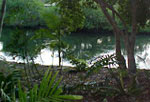 |
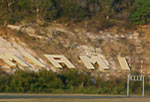 |
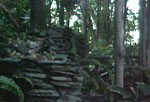 |
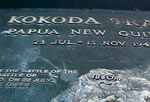 |
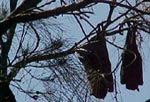 |
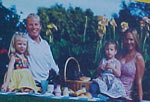 |
Along the Broadbeach strip of the Gold Coast Highway, at the 'gateway' to Surfers Paradise, a patch of greenery is found - Cascade Gardens, presumably named after the human constructed cascades that are enclosed in a landscaped rainforest setting. On the bend of a river, it features grass parklands and flowerbeds of exotic flowers and annuals of the more English looking variety, free barbecues and sheltered picnic tables, a children's playground and a library, a grave and memorial plaques. Nestled between the Little Tallebudgera Creek and the Pacific Highway, Cascade Gardens is a popular picnic area for both locals and tourists alike, and it belies a long history of such activities - long before colonisation. The site was, until relatively recently the home of one of the largest middens in SE Qld - a meeting and eating place for the local Yugambeh / Kombumerri Aboriginal people.
Like a great deal of significant and sacred aboriginal sites on the Gold Coast, the midden has been "removed" to make way for a more modern manmade western construct. Theorist, Jean Baudrillard makes the observation in 'The Procession of Simulacra' that Disneyland is a microcosm of the macrocosm that is America, in which 'all its values are exalted here, in miniature and comic strip form' (19982:24). He states that Disneyland is there to conceal the fact that the "real" America is Disneyland.
It also seems that America is not too distant from Cascade Gardens - the suburb of 'Florida Gardens' is just across the river and 'Miami' is not far away.. Cascade Gardens is not unlike a theme park either and can be seen as a social microcosm of the Gold Coast in that it reflects the value inhertant in a striving white middle-class dream. It is composed of a juxtaposition of various areas which have been labelled accordingly - for the purposes of this essay: Rainforest World, Rotary County, Neddy's Hill, The Library, Playground Central, Fireman's Corner, Lions Rotunda, and The Duck Pond. There is also Flying Fox bank, which lays on the limits of the area.
Unlike the Disneyland that Baudrillard describes, Cascade Gardens is not set up to be an 'imaginary world', though as further deconstruction of the site reveals, has many parallels to the theme park. Cascade Gardens functions in similar ways, though perhaps in more subtle ways than Disneyland or more appropriately the other theme parks that the Gold Coast is well known for: Movie World, Dream World and Sea World.
The first encounter a visitor may have with Cascade Gardens is to sight the large billboard sign welcoming traffic from the south, which displays the classic Gold Coast blonde family, posing on a picnic blanket. Arianesque, it portrays the idea of a typical nuclear family in what appears as a natural environment (of course not venturing far off that blanket). The visitor is 'welcomed' by the values that this billboard portrays, a notion that is seen to be normal or typical, yet certainly is not a truth for all people or all families. It sets a standard for the age-old ideals and values held by the associated Gold Coast groups, such as the Council, Rotary and Lions Club, that have shaped and created this park.
Rainforest World is probably the most obviously themed area. It attempts to simulate a rainforest setting including rainforest walks and cascades of the 60's variety. The Gold Coast Bulletin in 1967 describes the new gardens as having 'typically Australian waterfalls and fern and gum trees' (Gold Coast Bulletin 1967:12) This statement is debateable as a number of plants are of the imported variety. In my opinion these cascades seem to simulate waterfalls, but are so obviously human constructed, and look more like a movie set for Jurassic Park or a museum display.
A new amendment to the park is the very recent re-naming of Rainforest World, today it is officially known as 'The Kokoda Memorial Walk'. Cement stands that have remained blank for the past few weeks, have now been completed with a bronze-coloured plaque. The largest plaque mentions that this walk has been dedicated to the men that fought in Papua New Guinea in World War II, 'and helps appreciate the courage of the men who fought on the Kokoda trail'. Several of these appear along the slate paths in the rainforest area. Each plaque is named, for example 'Owen's Corner' and an area on a map of the Kokoda track is pinpointed with an arrow that states 'you are here'; indicating that the area somehow is representative of a point along the Kokoda track (in Papua New Guinea!). Under the title, more information is offered about events of that area during World War II. The Kokoda Memorial Walk is a simulation that aims to reminisce about the Kokoda Track, but it is not an exact replica. Just by (re)naming the track alters the context of the space, creating a nostalgic and patriotic space for the 'veteran community who reside here on the Gold Coast in recognition of their deeds and sacrifices in all conflicts in defence of Australia'.
The naming of the track is in commemoration of the 60th Anniversary of
the Kokoda campaign, though perhaps also reflects the media-hype induced
concerns of terrorism and the threat of war and therefore aims to induce
a sense of partriotism. Or rather, partriotism is induced via the supposed
threat of war and this perhaps has inspired the idea of the Kokoda Memorial
Walk.
The waterfalls signify paradise and a notion of the exotic - values that the Gold Coast strives to establish for itself. Although these waterfalls may present a fresh, pristine aura, a closer inspection reveals algae filled puddles, and a murky litter-filled mess with the recent drought taking its toll on all areas. Though with a cause to celebrate the change from 'Australian Rainforest' to 'Kokoda Walk', council workers have been re-landscaping the area and cleaning up it's image.
A strange smell is present when heading towards the south of the park, in an area where Rainforest World and Flying Fox Bank begin to parallel. This is excused via a recently installed sign containing information about the Flying Foxes. The sign states the importance of Cascade Gardens to the Flying Foxes, as it is their natural habitat, and mentions that the Flying Foxes extrude an unusual odor. If one ventures off the pathway away from Rainforest World, the Flying Foxes can be seen filling the trees along the creek bank.
Although Cascade Gardens is a natural habitat for these creatures, an article in the South Coast Bulletin reveals that mangroves and low lying scrub were to be removed from the gardens as to 'beautify ' the area in 1958 (South Coast Bulletin, 1958) These trees are absent from along the bank further north of Flying Foxes Bank, which would also have served as a natural habitat for the Flying Foxes. A little further south along the creek is the construction of the Gold Coast Convention Centre - a joint partnership between Jupiter's Casino and the QLD Government. This has encroached onto the Cascades and abolished more of the flying foxes habitat. Perhaps once again reflecting values of the importance of progress, regardless of environmental cost. It is important to note that the sign declaring the flying foxes habitat had only been installed AFTER the desecration caused by Jupiters' construction. Could this be a simulated concern feigned on behalf of the Council? Flying Fox Bank is probably the only area in the Cascade Gardens that is not constructed; it (barely) survives along side the development.
A road forms a one way circuit through the central area of the park and creates a boundary inside which is Neddy's Hill, The Library and the Lions Rotunda. Neddy's Hill is named so due to the grave that lies at the top of the slope. It is the highest point in the area. Neddy Harper was a pioneer that built a wharf on Little Tallebudgera Creek, a small distance north of Cascade Gardens. For a period of time the area including Cascade Gardens was known as Harper's (Coombes1999) as he had purchased 40 acres of the land for the sum 7 pounds, 10 shillings. Neddy Harper it would seem, has been deemed a local hero. He helped develop the timber industry, the 'first' industry on the Gold Coast. Though there is some controversy as to whether this really is the location of Neddy Harper's grave, it would appear that it's prominent position and regal plaque, that Neddy was an important character in the development of the Gold Coast. The history of the site however evolves a lot further than Harper's life on this land. And it would seem that the Indigenous heritage of the area is deemed not as important as that of a white pioneer. This observation is made due to an act that desecrated a huge shell midden in 1970 (Haglund-Callery&Quinell 1973:1), which should have remained an important indicator of Indigenous occupation of the land.
"Shell mounds have been destroyed to make way for urban development - they are irreplaceable features of Aboriginal culture and every effort should be made to preserve them" Rory O'connor, Kombumerri (O'Connor1997:13)
The removal of the midden, and consequent construction of the road, also reflects an attitude that prevails on the Gold Coast - ignorance of an Indigenous existence, and the associated culture - unless of course, it is to represent an exoticism and uniqueness that visitors crave and seek. That Cascade Gardens was a place of feasting for aboriginal people seems widely publicised via a website about the area (http://www.goldcoast.qld.gov.au/t_std2.asp?pid=992). Though, there seems to be a discrepancy, as upon questioning, a representative of the Gold Coast City Council's Parks Unit, verbally proclaimed that "there was not an Aboriginal Midden in Cascade Gardens" and "nothing Aboriginal has been moved from the site." (27-10-02). Although archeological documentation from 1973 states otherwise - an article titled 'A Shell Midden at Cascade Gardens, Broadbeach, Southeast Queensland' held at the local Southport Library, and states 'Also, there were rumours that burials had been found in that area'. 'The Aboriginal relics Advisory Committee suggested that such a poorly preserved site did not warrant resumption but that it should not be destroyed without further archeological investigation. Accordingly, it was decided that the site should be excavated as soon as possible'
When visiting a site, it is important to question the validity of its constructs and even more important to consider, what might have been and what hasn't been acknowledged. Of all the above mentioned memorials, plaques and signage featured in Cascade Gardens, not one is in honour of the Aboriginal people who once resided and held associations with the area, nor their descendants, who still do. If the notion of acknowledging wartime in a distant land is seen as important, surely the same respect and acknowledgement could be shown for local Indigenous landmarks, heritage and struggles. Perhaps omitting these values for the sake of others are conducive to the notions of the 'shiny, happy' theme park and a major contributor to more enmasse patriotic touches. However it is no coincidence that these values are also reflective of those of Prime Minister John Howard, as he praises and creates heroes of the military and denies the indigenous concerns such as the Stolen Generation. Sometimes this double standard is called racism.
"No Aboriginal group anywhere in Australia ever surrendered its title to or its rights over the country it traditionally had responsibility for." Ysola Best + Alex Barlow (Kombumerri, Saltwater People)
essay by nicola turton & Jenny Fraser (Nov. 2002)
Bibliography
Baudrillard,J (1982) 'The Procession of Simulacra' Semiotext(e): New York
Best, Ysola (1997) 'Kombumerri - Saltwater People' Heinemann Library: Melbourne
Haglund-Callery, L & Quinell, M (1973) 'A Shell Midden at Cascade Gardens, Broadbeach, Southern Queensland' University od Qld Press: St Lucia
Gold Coast Bulletin (1967) 'Solemnity in the Sun' 27th October
Gold Coast City Council
- Heritage Tours
http://www.goldcoast.qld.gov.au/t_std2.asp?pid=992
Gold Coast Online
http://www.bond.edu.au/hss/news/9920729/29-7-992.htm
O'Connor Rory (1997) 'the Kombumerri - Aboriginal people of the Gold Coast'
South Coast Bulletin (1958) ' Little Tallebudgera Creek - Proposed Improvement
to Scenic Reserve' April 9th